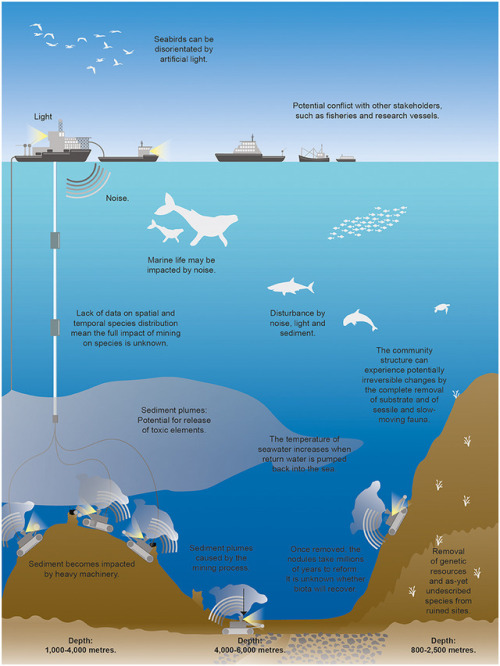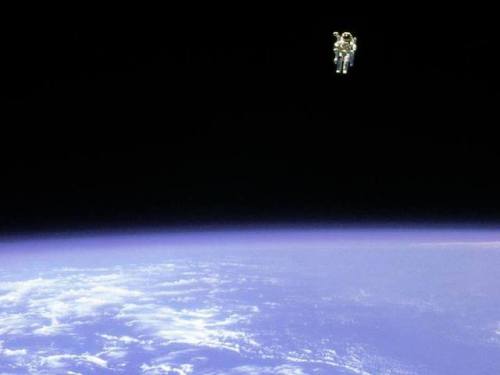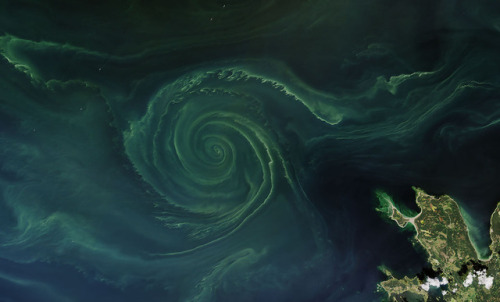🗽click Here For More🗽

🗽click here for more🗽
🗼also follow us on insta!🗼
More Posts from Simplyphytoplankton and Others
Family 2
Before...
Pets..
Health scares
Regrets?
I've already written one entry reflecting on how my family is doing without me and how I am doing without all of my family and friends. I've had to deal with a number of things that have happened at home.
Shortly before I left the United States, my grandfather faced a few health scares. By the time I left, everything had almost past, aside from some minor things. I knew there was a possibility that it could get worse while I was abroad, but I also knew that going abroad would not change any outcome.
Then, almost a month and a half ago, my family had to put one of our dogs to sleep. It was very sudden and everything happened in a few days. What made this more surprising is that our oldest dog is clearly showing his age and we all knew it was possible that I may not see him again, but our other dog is a little bit younger, but he always acts like a puppy so you would never know that he was ten years old. I even remember telling him that I didn’t have to worry about him because it seemed like he was in perfect health. Of course, I feel guilty about saying this, but there is no way I or anyone else could have known what was going to happen.
A few weeks before that, my dad broke his ankle and leg, and would be out of work for weeks. For me, the biggest impact this had was related to money, since my dad is the main bread winner in our family by a mile and it's not like we are rich or very comfortable to begin with. Now, today (Mother's Day in the U.S.), my mom called me because something else happened and my dad has been in critical condition all day and at this point, there is still a lot of uncertainty. It is harder to deal with since I am abroad, especially since a lot of people at SU have finished the semester and have been able to go home.
I think that all of this is plenty of reason to regret going abroad.....but I don't. Even though I lot has happened and is still happening, there is not much I could have done if I was home. More than likely, all of this would have still happened because stuff just happens in life. Don’t get me wrong, it is harder being abroad and being about from all of my friends and family but right now, I'm just reminding myself that stuff like this happens in life and often under the worst of circumstances (not that there is a best of circumstances).

As it is Halloween here’s a still unsolved natural mystery.
Located in Judge C.R. Magney State Park, Minnesota, there is an unsolved geological mystery nicknamed The Devil’s Kettle. Mid way along the Brule River that runs through the Park the river splits in two to go around an outcrop of rhyolite. Here’s where it gets interesting, the split flows produce 2 waterfalls along side each other. The eastern flow drops around 15m (50ft) into a pool and continues off down stream. The western flow however drops 3m (10ft) into a pothole disappearing underground.
Keep reading

“Yes, hello, are you aware that it’s Sea Turtle Week?"
This endangered hawksbill turtle wants to be sure you know! Hawksbills are just one of several species of sea turtle found within the waters of Hawaiian Islands Humpback Whale National Marine Sanctuary. Look closely and you can see a GPS-linked satellite tag on its shell. This tag helps NOAA researchers track its movements, so we can better understand which habitats are critical for hawksbill recovery.
(Photo: Don McLeish/NOAA)
[Image description: A close-up of a hawksbill turtle that is looking directly at the camera. A small GPS tag is attached to its shell.]

DEEP-SEA MINING COULD DESTROY MARINE ECOSYSTEMS
Despite deep-sea environments covers about half of the Earth’s surface and is home to a vast range of species, little is known about these environments, and mining could have long-lasting and unforeseen consequences, not just at mining sites but also across much larger areas.
According to a study published in scientific journal Frontiers in Marine Science, which is the first to give a global overview of all current plans to mine the seabed, in both national and international waters, and looks at the potential impacts including physical destruction of seabed habitats, creation of large underwater plumes of sediment and the effects of chemical, noise and light pollution arising from mining operations.
Rising demand for minerals and metals, including for use in the technology sector, has led to a resurgence of interest in exploration of mineral resources located on the seabed. Such resources, whether seafloor massive sulfides around hydrothermal vents, cobalt-rich crusts on the flanks of seamounts or fields of manganese nodules on the abyssal plains, cannot be considered in isolation of the distinctive, in some cases unique, assemblages of marine species associated with the same habitats and structures.
Some operations are already taking place, generally at relatively shallow depths near national coastlines. The first commercial enterprise, expected to target mineral-rich sulfides in deeper waters, at depths between 1,500 and 2,000 m on the continental shelf of Papua New Guinea, is scheduled to begin early in 2019.
Illustration: A schematic showing the potential impacts of deep-sea mining on marine ecosystems. Schematic not to scale.
Reference: Miller et al., 2018. An Overview of Seabed Mining Including the Current State of Development, Environmental Impacts, and Knowledge Gaps. Frontiers in Marine Science.


(source)
With Stephen Hawking’s passing, today is a sad day for science. But amongst all his praise and achievements in the fields of physics, for me personally his biggest achievement was making a grand, full life despite the terrible misfortune of being diagnosed with ALS. It would have been easy to become a recluse, embittered with the hand he’d been dealt, a brilliant misanthrope. But this was a man who maintained his sense of humor and refused to be mentally beaten. Three years ago, he told One Direction fans that the theory of alternate universes could provide a reality where Zayn Malik was still in the band. He conducted an interview with John Oliver where his factual, deadpan delivery was funnier than his interviewer, managing the cheekiest grins as he did so. And let us not forget that Stephen Hawking is the only person to have ever portrayed themselves in a Star Trek episode (Next Generation, “Descent, Part 1″), where he appeared alongside actors portraying Einstein and Sir Isaac Newton, whom he proceeded to defeat in poker.

Hawking’s observations on black hole radiation, string theory, alternate universes and artificial intelligence are things that will probably forever remain beyond most of us. But we could all learn a thing or two from his humanity.

Meet Bruce McCandless. He was a bit of a bad-ass. In 1984, Bruce was aboard the Challenger Space Shuttle and became the first human to walk in space without a safety line. By utilising a nitrogen propelled Manned Maneuvering Unit (MMU), he stepped free from Challenger into the blackness of space for a 90-minute space walk and wandered as far as 97 meters from the ship. The result is this amazing image which captures ingenuity, innovation and most certainly bravery.
Bruce McCandless died yesterday at the age of 80.
-Jean Image Credit: NASA
Don’t underestimate the importance of phytoplankton!

9 Ocean Facts You Likely Don’t Know, but Should
Earth is a place dominated by water, mainly oceans. It’s also a place our researchers study to understand life. Trillions of gallons of water flow freely across the surface of our blue-green planet. Ocean’s vibrant ecosystems impact our lives in many ways.
In celebration of World Oceans Day, here are a few things you might not know about these complex waterways.
1. Why is the ocean blue?

The way light is absorbed and scattered throughout the ocean determines which colors it takes on. Red, orange, yellow,and green light are absorbed quickly beneath the surface, leaving blue light to be scattered and reflected back. This causes us to see various blue and violet hues.
2. Want a good fishing spot?

Follow the phytoplankton! These small plant-like organisms are the beginning of the food web for most of the ocean. As phytoplankton grow and multiply, they are eaten by zooplankton, small fish and other animals. Larger animals then eat the smaller ones. The fishing industry identifies good spots by using ocean color images to locate areas rich in phytoplankton. Phytoplankton, as revealed by ocean color, frequently show scientists where ocean currents provide nutrients for plant growth.
3. The ocean is many colors.

When we look at the ocean from space, we see many different shades of blue. Using instruments that are more sensitive than the human eye, we can measure carefully the fantastic array of colors of the ocean. Different colors may reveal the presence and amount of phytoplankton, sediments and dissolved organic matter.
4. The ocean can be a dark place.
About 70 percent of the planet is ocean, with an average depth of more than 12,400 feet. Given that light doesn’t penetrate much deeper than 330 feet below the water’s surface (in the clearest water), most of our planet is in a perpetual state of darkness. Although dark, this part of the ocean still supports many forms of life, some of which are fed by sinking phytoplankton.
5. We study all aspects of ocean life.

Instruments on satellites in space, hundreds of kilometers above us, can measure many things about the sea: surface winds, sea surface temperature, water color, wave height, and height of the ocean surface.
6. In a gallon of average sea water, there is about ½ cup of salt.

The amount of salt varies depending on location. The Atlantic Ocean is saltier than the Pacific Ocean, for instance. Most of the salt in the ocean is the same kind of salt we put on our food: sodium chloride.
7. A single drop of sea water is teeming with life.

It will most likely have millions (yes, millions!) of bacteria and viruses, thousands of phytoplankton cells, and even some fish eggs, baby crabs, and small worms.
8. Where does Earth store freshwater?

Just 3.5 percent of Earth’s water is fresh—that is, with few salts in it. You can find Earth’s freshwater in our lakes, rivers, and streams, but don’t forget groundwater and glaciers. Over 68 percent of Earth’s freshwater is locked up in ice and glaciers. And another 30 percent is in groundwater.
9. Phytoplankton are the “lungs of the ocean”.

Just like forests are considered the “lungs of the earth”, phytoplankton is known for providing the same service in the ocean! They consume carbon dioxide, dissolved in the sunlit portion of the ocean, and produce about half of the world’s oxygen.
Want to learn more about how we study the ocean? Follow @NASAEarth on twitter.
Make sure to follow us on Tumblr for your regular dose of space: http://nasa.tumblr.com.

Blooms in the Baltic
Every summer, phytoplankton – microscopic plant-like organisms – spread across the North Atlantic, with blooms spanning hundreds and sometimes thousands of miles. Nutrient-rich, cooler waters tend to promote more growth among marine plants and phytoplankton than is found in tropical waters. Blooms this summer off Scandinavia seem to be particularly intense.
On July 18, 2018, the Operational Land Imager (OLI) on Landsat 8 acquired a natural-color image of a swirling green phytoplankton bloom in the Gulf of Finland, a section of the Baltic Sea. Note how the phytoplankton trace the edges of a vortex; it is possible that this ocean eddy is pumping up nutrients from the depths.
Though it is impossible to know the phytoplankton type without sampling the water, three decades of satellite observations suggest that these green blooms are likely to be cyanobacteria (blue-green algae), an ancient type of marine bacteria that capture and store solar energy through photosynthesis (like plants).
In recent years, the proliferation of algae blooms in the Baltic Sea has led to the regular appearance of “dead zones” in the basin. Phytoplankton and cyanobacteria consume the abundant nutrients in the Baltic ¬and deplete the oxygen. According to researchers from Finland’s University of Turku, the dead zone this year is estimated to span about 70,000 square kilometers (27,000 square miles).
Read more: https://go.nasa.gov/2uLK4aZ
Make sure to follow us on Tumblr for your regular dose of space: http://nasa.tumblr.com.
-
 michealgrand liked this · 7 years ago
michealgrand liked this · 7 years ago -
 simplyphytoplankton reblogged this · 7 years ago
simplyphytoplankton reblogged this · 7 years ago -
 simplyphytoplankton liked this · 7 years ago
simplyphytoplankton liked this · 7 years ago -
 the-tide-is-out reblogged this · 7 years ago
the-tide-is-out reblogged this · 7 years ago -
 kiwi-tropicali reblogged this · 7 years ago
kiwi-tropicali reblogged this · 7 years ago -
 wrasse72 liked this · 7 years ago
wrasse72 liked this · 7 years ago -
 inthemiddleofadoughnut reblogged this · 7 years ago
inthemiddleofadoughnut reblogged this · 7 years ago -
 hanaaa6969-blog liked this · 7 years ago
hanaaa6969-blog liked this · 7 years ago -
 joseleyva1988-blog liked this · 7 years ago
joseleyva1988-blog liked this · 7 years ago -
 daryabrosu liked this · 7 years ago
daryabrosu liked this · 7 years ago -
 eggplantsandbuildings liked this · 7 years ago
eggplantsandbuildings liked this · 7 years ago -
 lucifersta liked this · 7 years ago
lucifersta liked this · 7 years ago -
 lucifersta reblogged this · 7 years ago
lucifersta reblogged this · 7 years ago -
 actingextra-luxury reblogged this · 7 years ago
actingextra-luxury reblogged this · 7 years ago

Blog dedicted to phytoplankton. Phytoplankton are microscopic organisms that are responsible for half of the photosynthesis that occurs on Earth. Oh, and they look like art... Follow to learn more about these amazing litter critters! Caution: Will share other ocean science posts!Run by an oceanographer and phytoplankton expert. Currently a postdoctoral researcher.Profile image: False Colored SEM image of Emiliania huxleyi, a coccolithophore, and the subject of my doctoral work. Credit: Steve Gschmeissner/ Science Photo Library/ Getty ImagesHeader image: Satellite image of a phytoplankton bloom off the Alaskan Coast, in the Chukchi SeaCredit: NASA image by Norman Kuring/NASA's Ocean Color Web https://earthobservatory.nasa.gov/images/92412/churning-in-the-chukchi-sea
158 posts
